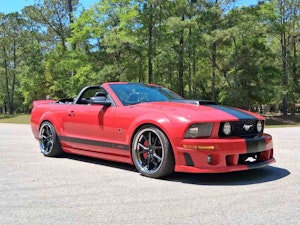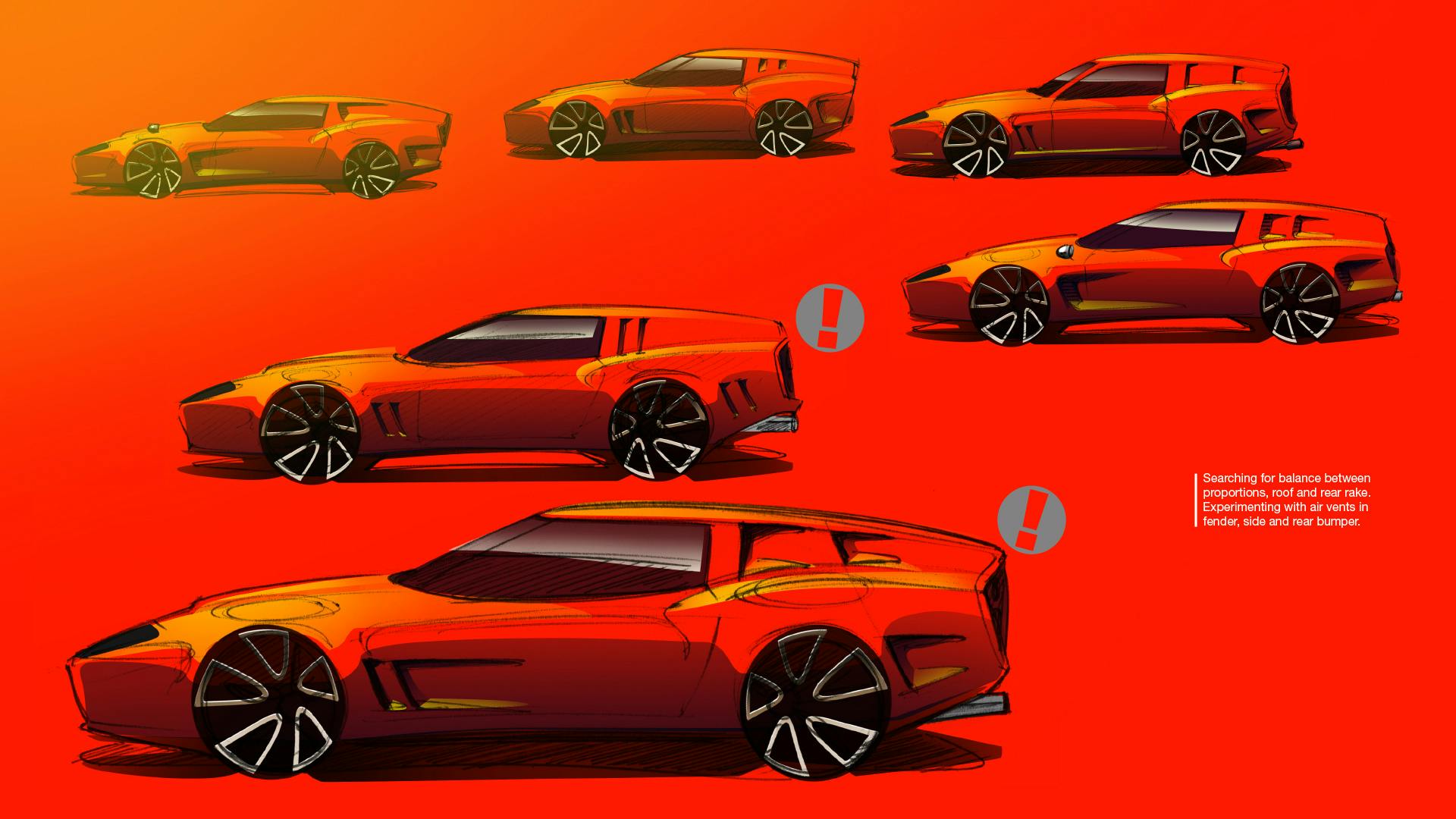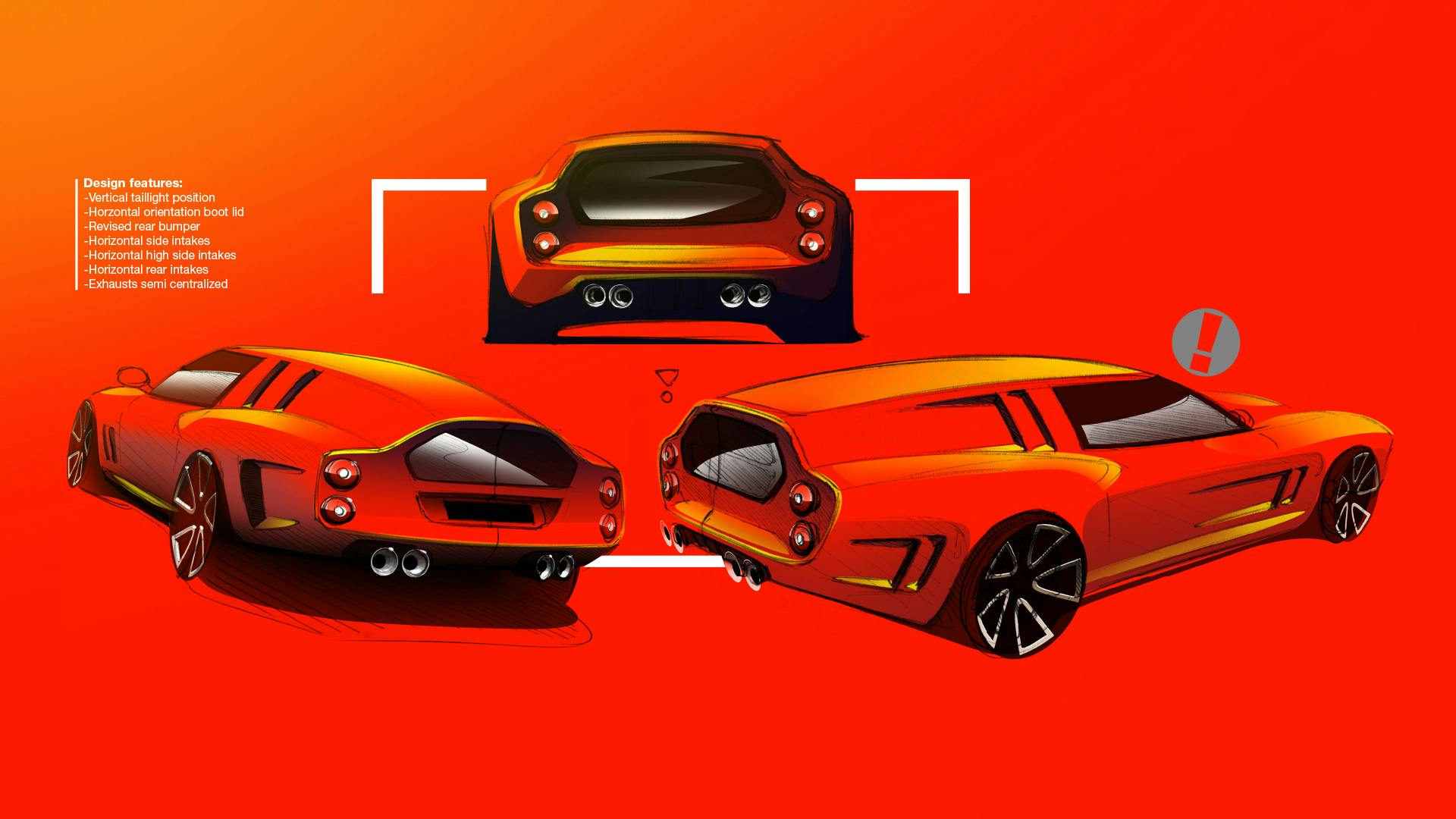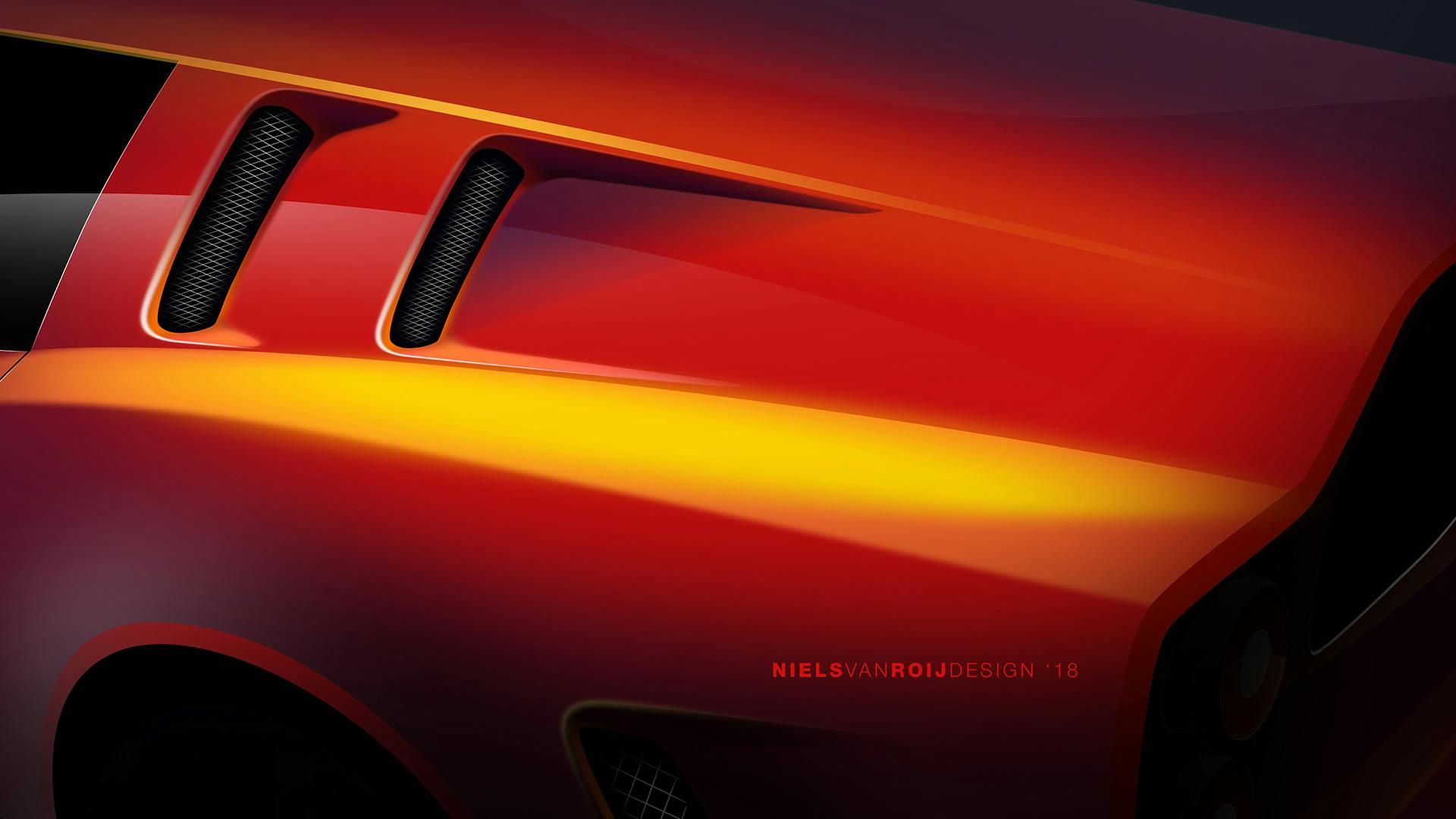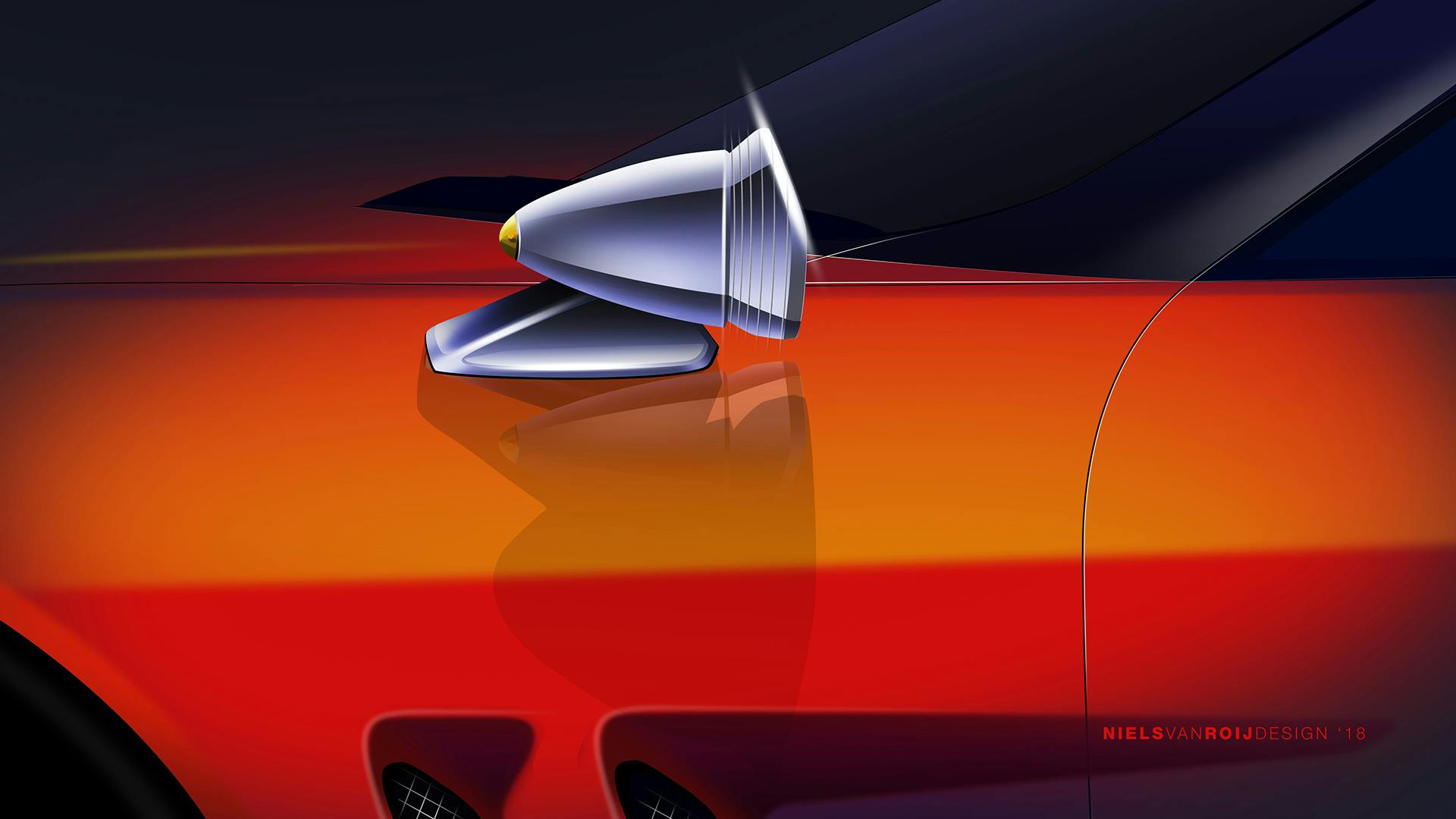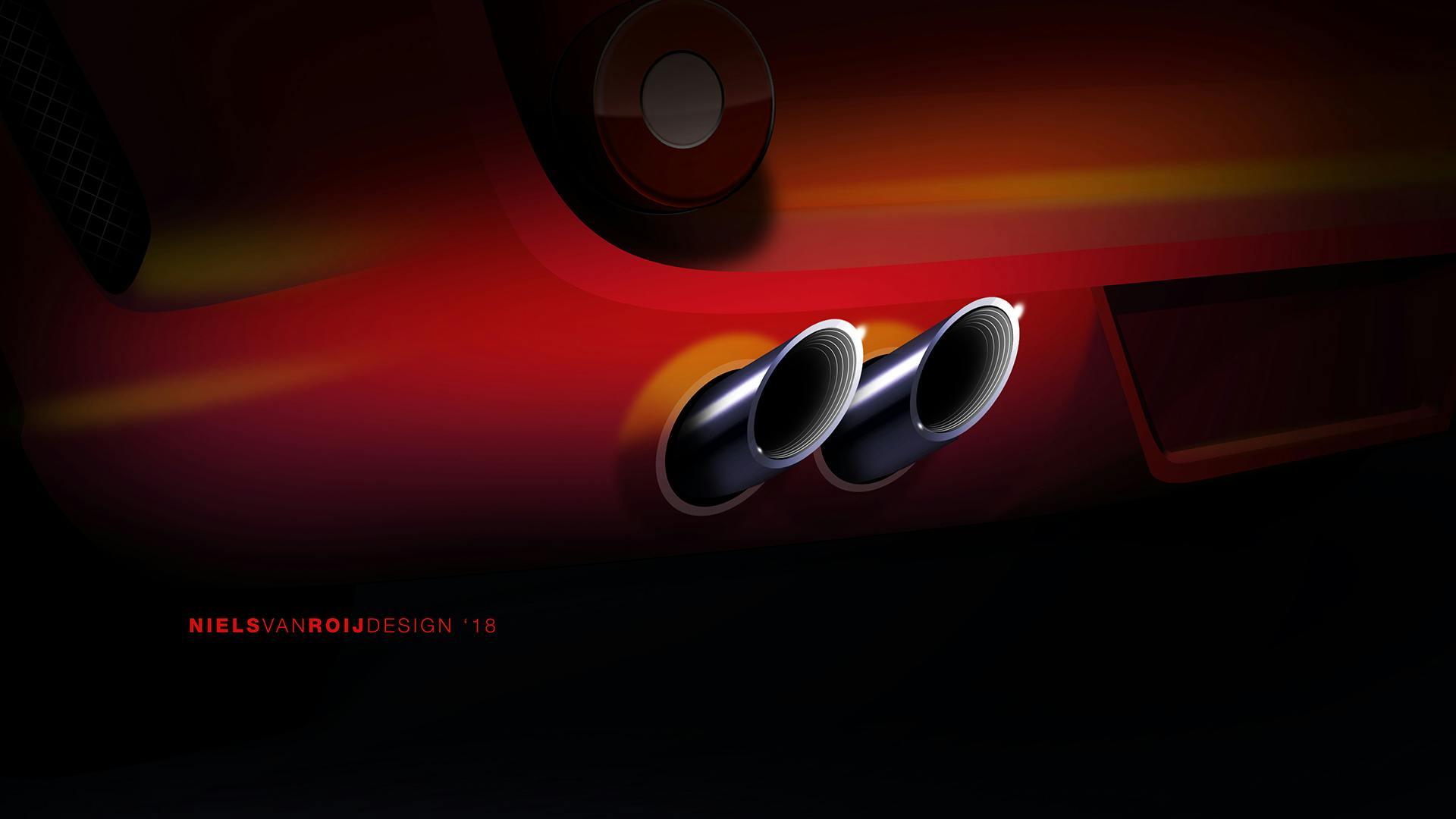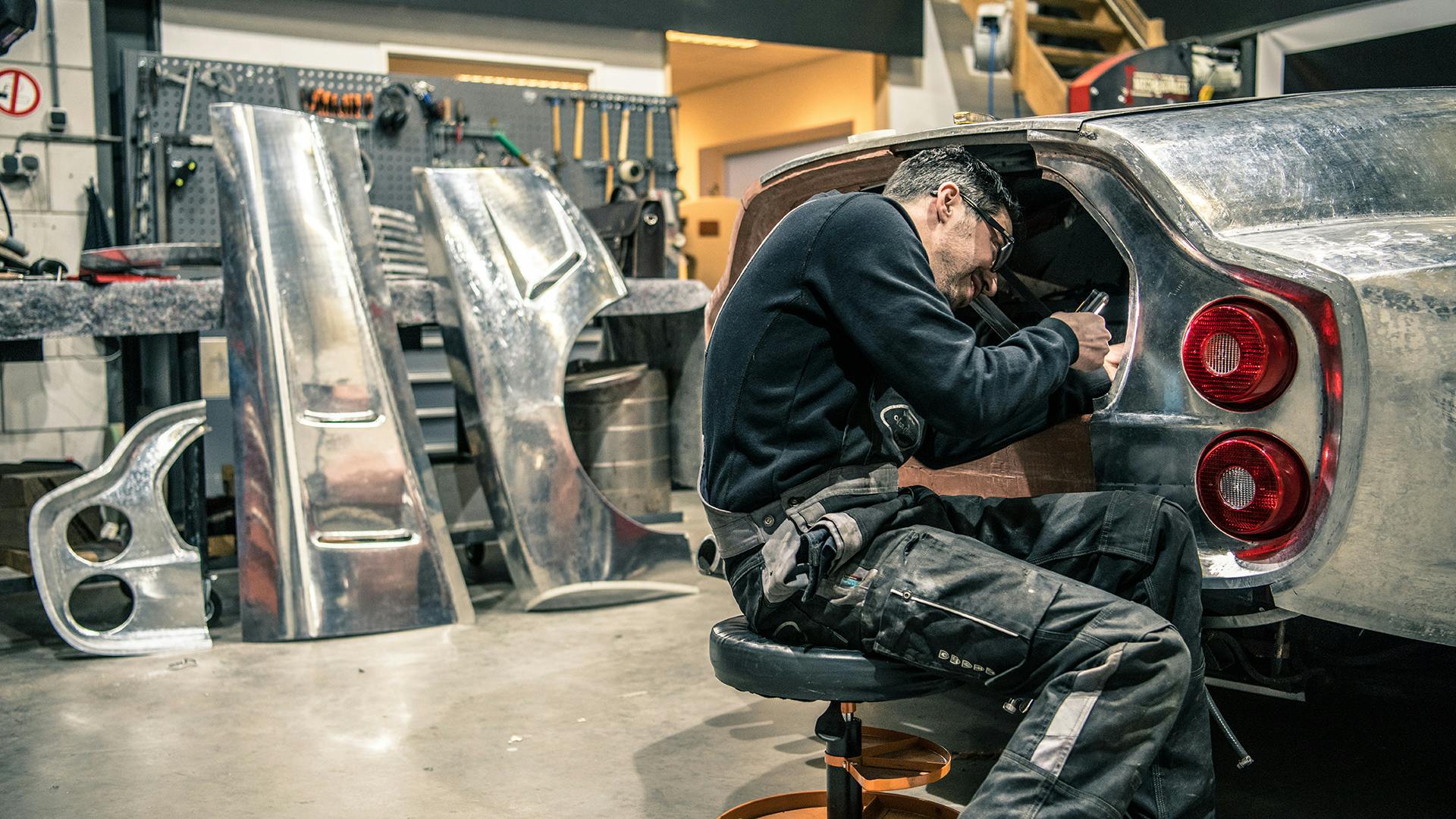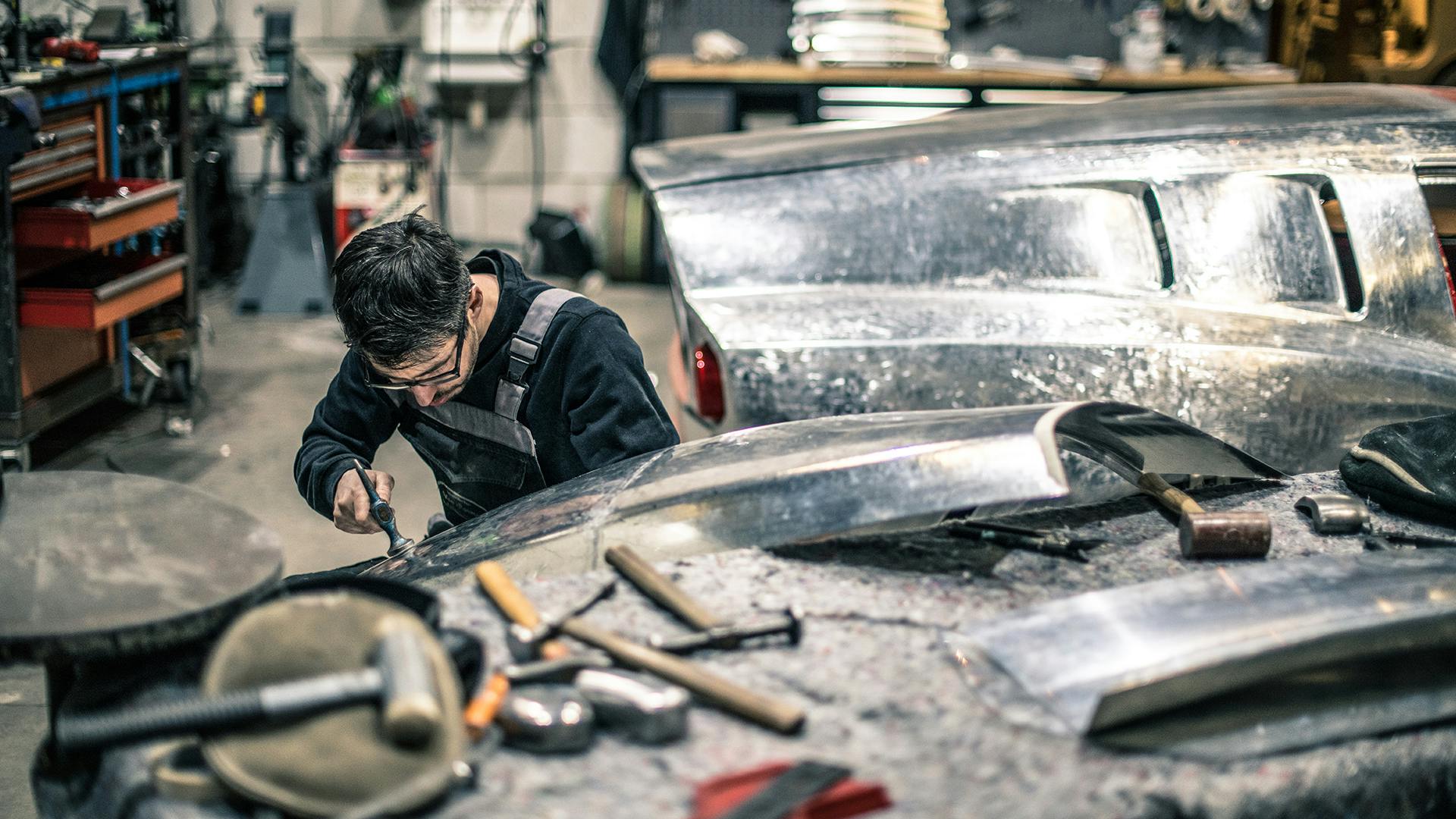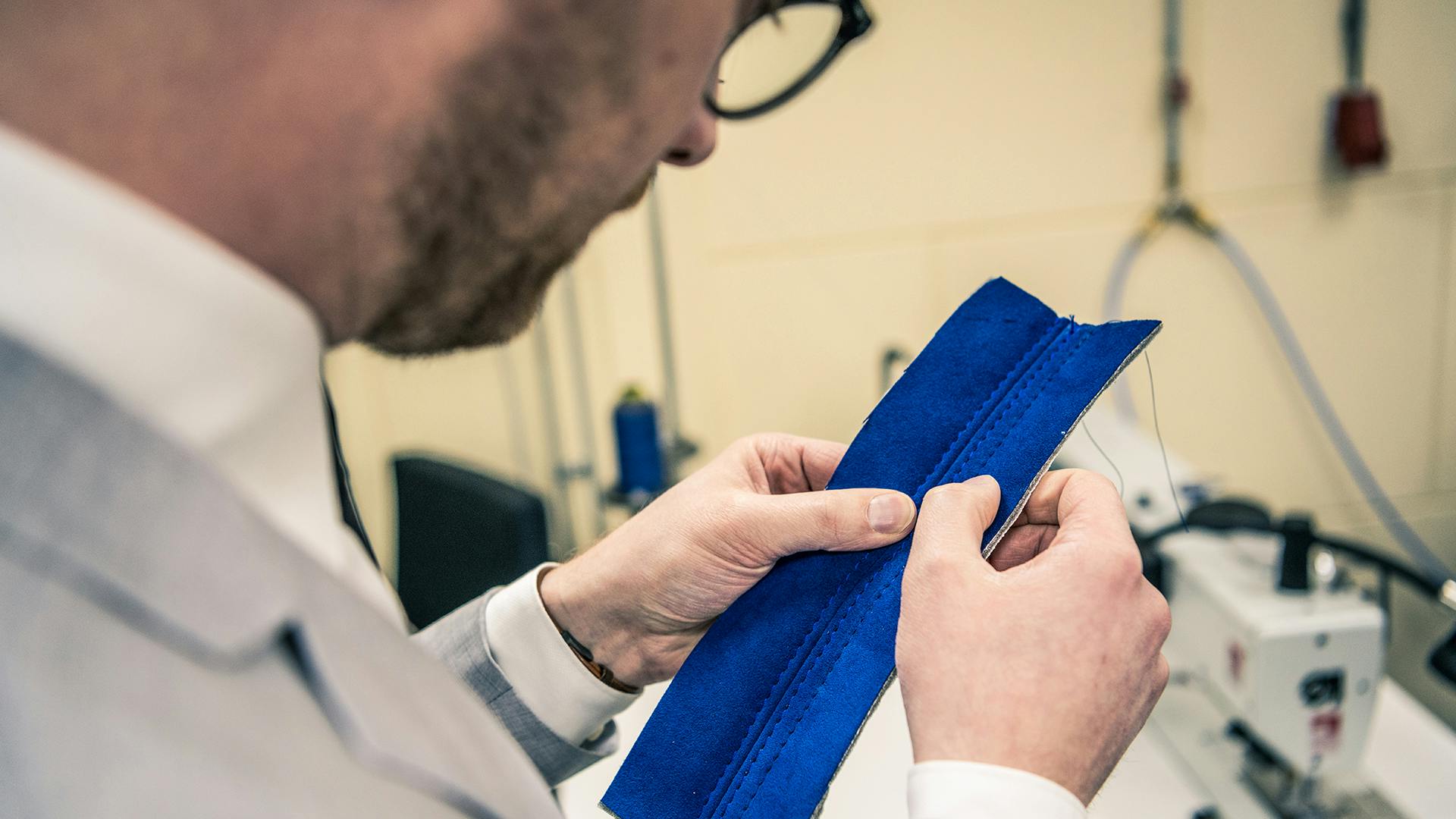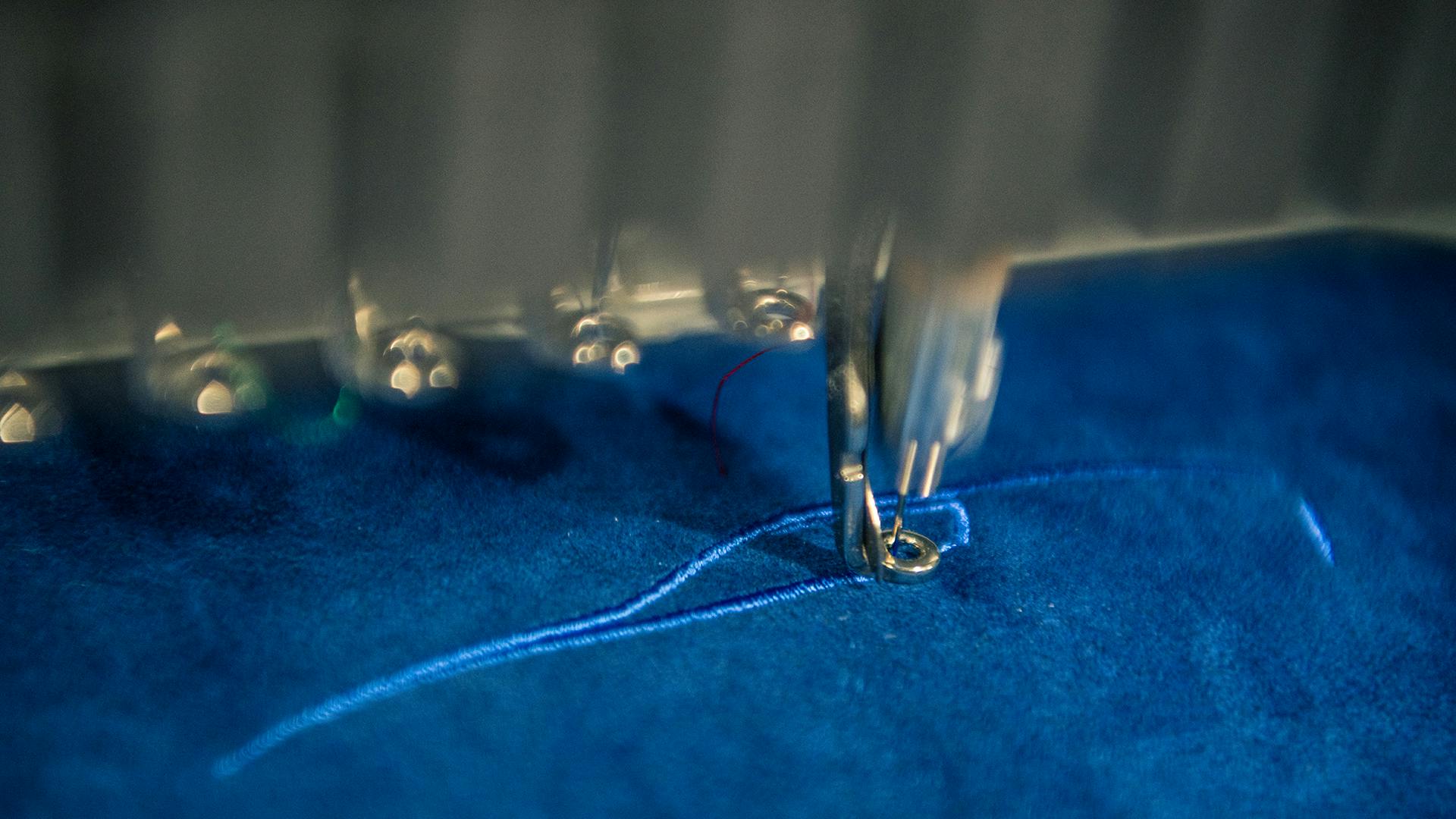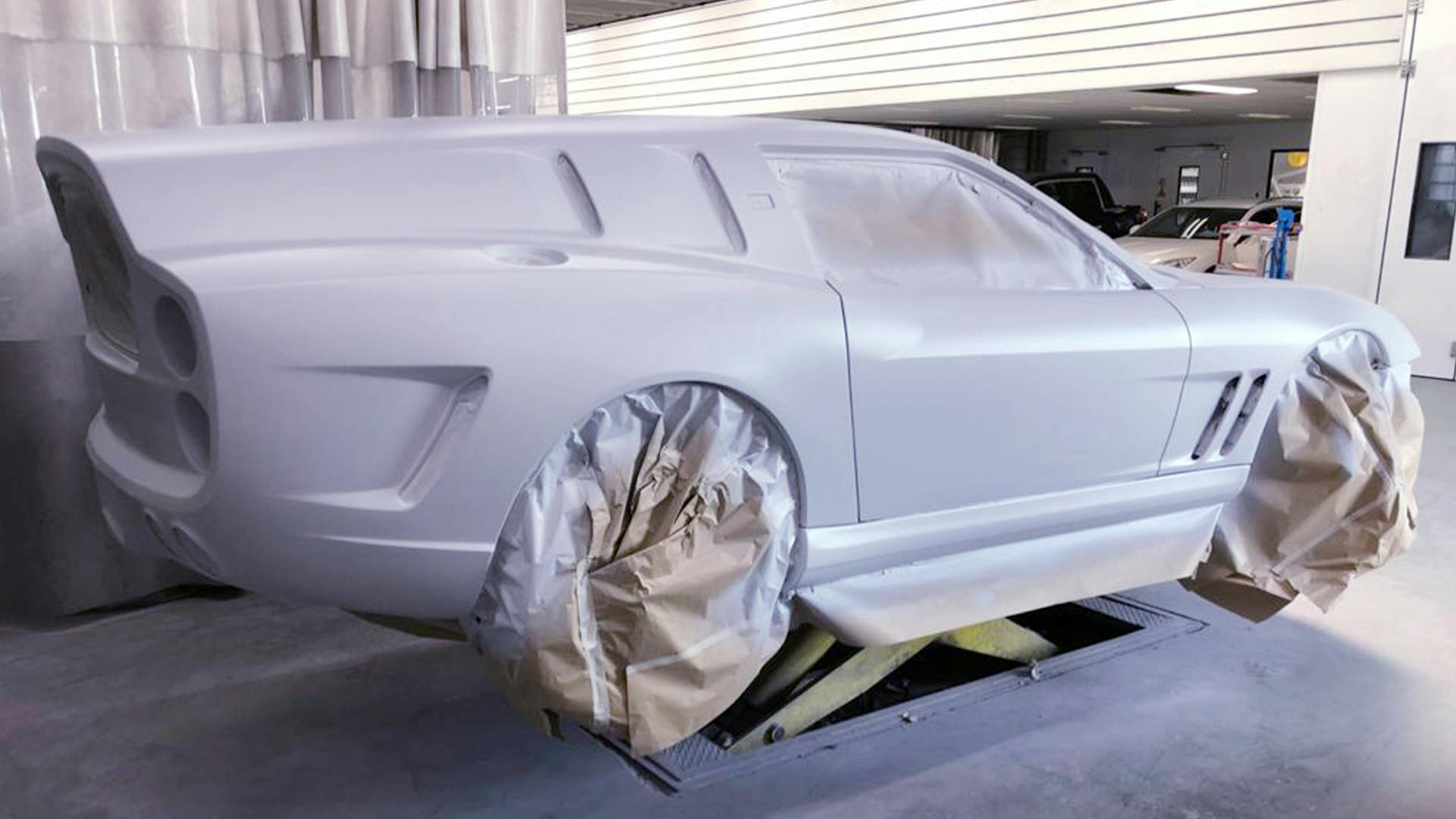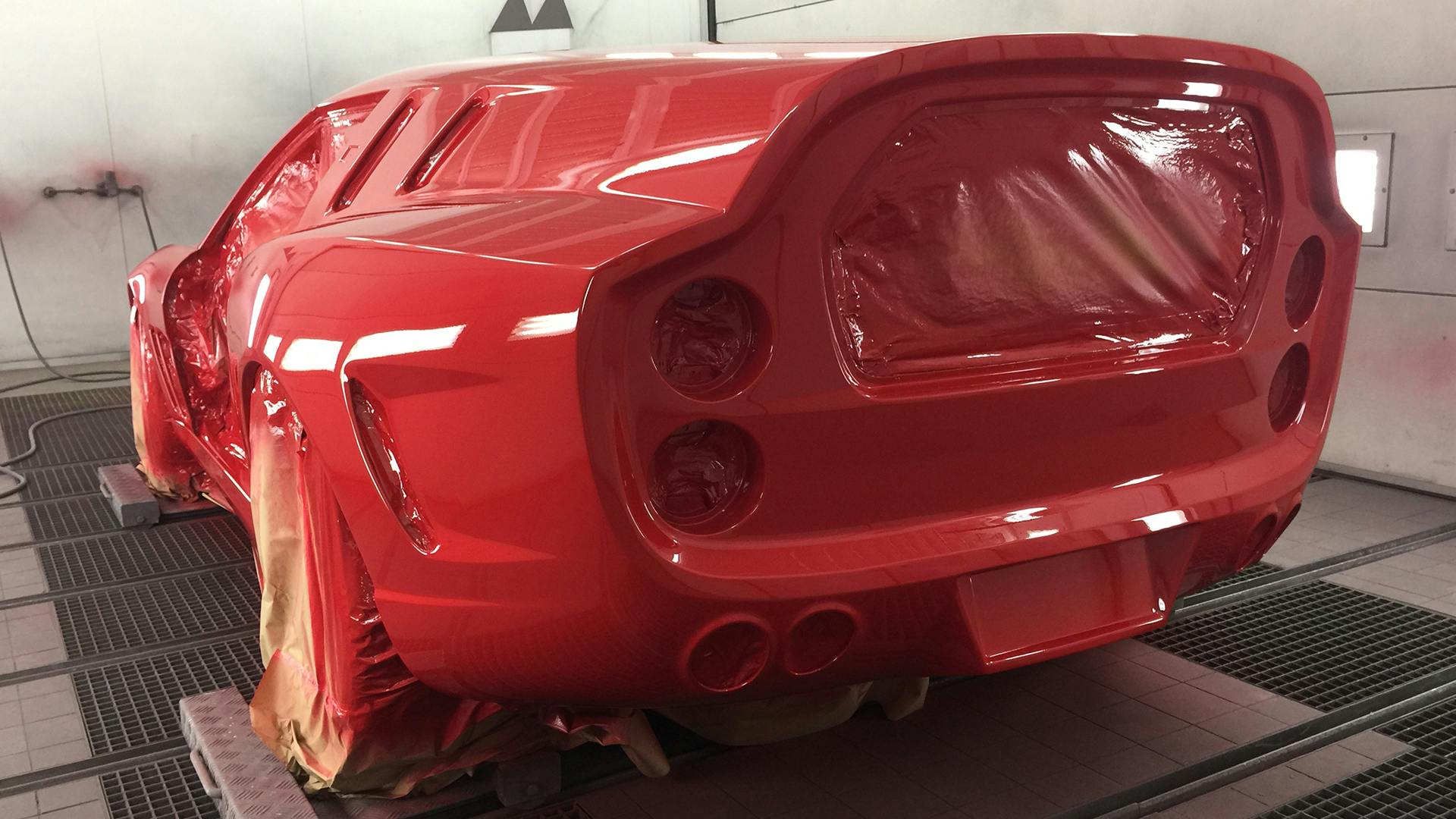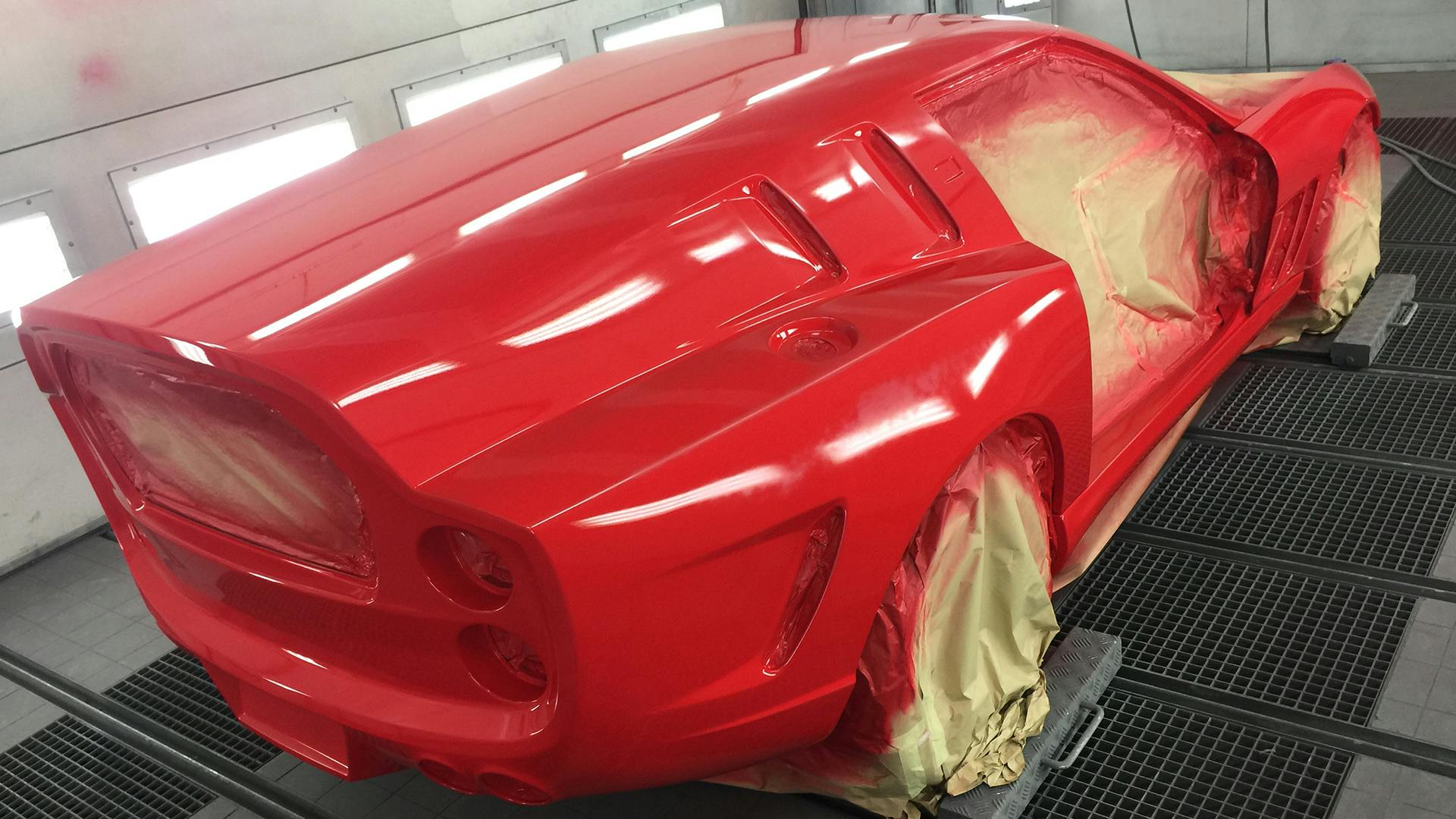Media | Articles
The inside story of a “new original” Ferrari Breadvan
Dutch Designer Niels van Roij has built a reputation on crafting one-off, coachbuilt automotive artworks for the well-heeled. His Tesla and Rolls-Royce shooting brakes are sleek, stylish, and sympathetic to the original source cars.
Now, van Roij is putting the final touches on a very special Ferrari 250 GT SWB tribute. The Breadvan Hommage is neither restomod nor continuation, but a “new original,” he says. “It’s a very fresh translation. It’s not a retrospective car. It’s really trying to take the right cues and take them into the future,” he adds.
The story began over two years ago when a client saw the original Breadvan race at Goodwood and decided that he wanted a modern interpretation of the car that he could daily drive.
The first stage was to pick a source vehicle, and while a more recent Ferrari may have been the obvious choice, for van Roij the 550 Maranello was the only option. He needed a front-mounted V-12 and a manual transmission on which to build and the Maranello was the car that brought this formula back after decades of absence.
“It was the return for Ferrari for this layout since the Daytona. So it was a very important car,” he says.
Marketplace
Buy and sell classics with confidence
He sourced a car with rare carbon seats and set to work. Beginning with a multitude of ideation sketches, done in black pen and colored in Photoshop, the car gradually took shape. Numerous iterations of the design went back and forth between van Roij and his client, with countless variations on the roofline, rear window, air intakes and more.
The final design shares only the windshield with the Maranello, yet the air intakes retain a 550 familiarity. When it comes to the overall result van Roij says: “It’s very rich in sculpture. In all honesty, the 1962 car isn’t necessarily very pleasant to look at. It’s not a well resolved piece of design, it was just trying to be as efficient as possible. What I tried to do was to design a car that is actually also very pleasant to look at.”
From sketches and digital renders van Roij moved to full-size clay models, just as OEMs would do. “There is not one car I work with that doesn’t either go into full size clay or full size milled foam,” he says.
The interior also saw a variety of different approaches before settling on a result which tidies up the slightly scattergun approach to switchgear, replaces plastics with milled aluminum, and re-trims cabin in blue Alcantara and black leather. Three particular features stand out: the race-style door pulls, the silhouette stitched into the seats, and the exposed, gated gear shifter. At one point in the process van Roij even proposed exposing the gear linkage rods as well, but that one didn’t get past the client.
Mechanically the Breadvan Hommage is still a 550 Maranello. The wheelbase and crash structures are untouched to make sure that it will be road legal in Germany where the client resides. The original Ferrari windshield was also kept for pragmatic reasons.
“This car will be driven, and probably will be driven hard,” says van Roij. “Imagine if there was a stone chip and he had to wait for three months for the new bespoke glass to arrive. That wouldn’t really help the client.”
With the hand-formed bodywork complete and painted, and the interior already stitched together, the car is nearing completion. One thing that will not appear on the finished vehicle? A Ferrari badge. Partly, that’s because van Roij says, “we respect the OEM manufacturers and as long as we do that, we usually get the respect back,” but not wearing a prancing horse is also true to the original.

In 1962 Count Giovanni Volpi, owner of Scuderia Serenissima wanted to upgrade a 250 GT SWB to go against the works GTOs, but Enzo Ferrari refused to sell him a car. Instead Volpi privately bought the 1961 car which placed second at the Tour de France. He hired engineer Giotto Bizzarrini and bodywork specialist Piero Drogo to build the car. The incredibly low, aerodynamic Kamm-backed machine was nicknamed La Camionnette (The Little Truck) by the French when it entered the 1962 Le Mans 24 Hours. English speakers dubbed it The Breadvan. Despite failing to finish at Le Mans the car was a successful campaigner, winning the GT class in the Guards Trophy at Brands Hatch and the Ollon-Villars Hillclimb. Yet, because of Enzo’s displeasure it never wore a Ferrari badge.
After 90 weeks of work, the Breadvan Hommage is finally almost finished and van Roij has documented the process in a series of YouTube videos. If you geek out on car design they’re well worth a watch before the car is unveiled in early 2021.




